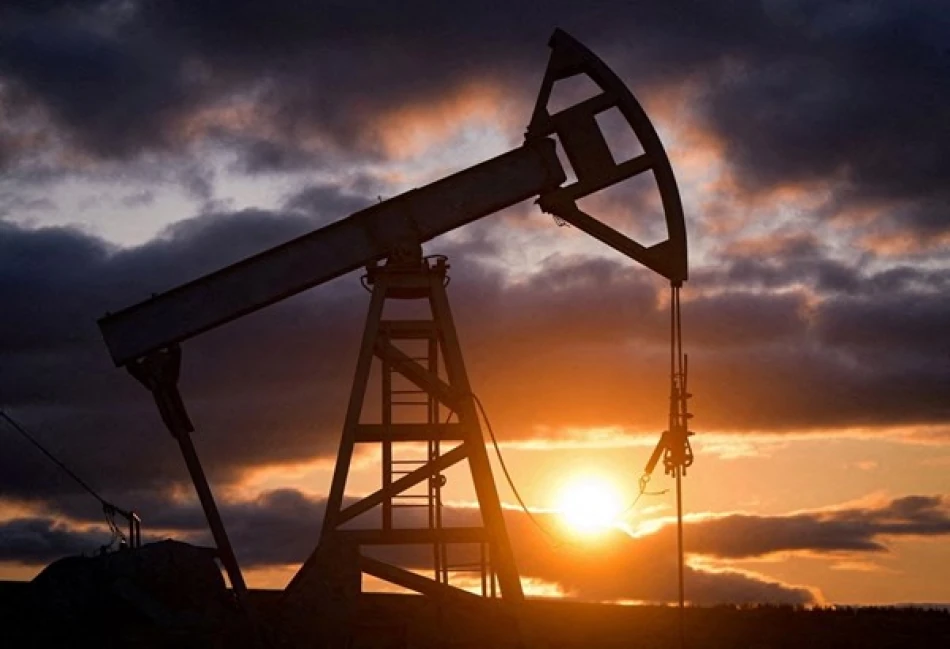
Oil Prices Surge: Market Dynamics and Global Implications
Oil Prices Rebound Ahead of High-Stakes Trump-Putin Summit
Oil markets recovered Thursday from a previous session selloff as traders positioned themselves ahead of a crucial meeting between U.S. President Donald Trump and Russian President Vladimir Putin. The diplomatic encounter could reshape global energy dynamics, with both leaders representing nations that collectively influence nearly 25% of world oil production.
Market Movement Reflects Geopolitical Uncertainty
Brent crude futures climbed 28 cents, or 0.43%, to $65.91 per barrel by 0057 GMT, while West Texas Intermediate (WTI) crude gained 23 cents, or 0.37%, to $62.89. The modest recovery suggests markets are cautiously optimistic about potential diplomatic breakthroughs, though the gains remain fragile given the volatile nature of U.S.-Russia relations.
The timing of this price movement is particularly significant. Oil markets have been hypersensitive to geopolitical developments, especially those involving major producers. Russia, as the world's second-largest oil producer after Saudi Arabia, wields considerable influence over global supply chains and pricing mechanisms.
Why This Summit Matters for Energy Markets
Sanctions and Supply Dynamics
The Trump-Putin meeting carries substantial implications for existing sanctions regimes that have constrained Russian energy exports. Any hint of sanctions relief could flood markets with additional Russian crude, potentially pressuring prices downward. Conversely, escalated tensions could tighten supply and drive prices higher.
Strategic Petroleum Reserves
Both nations maintain significant strategic petroleum reserves and have used them as diplomatic tools. The United States has previously coordinated reserve releases with allies to counter price spikes, while Russia has leveraged its energy exports to advance foreign policy objectives in Europe and beyond.
Investor Implications and Trading Strategies
Energy traders are likely hedging their positions ahead of the summit, explaining the relatively muted price movements despite the high-stakes nature of the meeting. The current price levels suggest markets are pricing in a neutral outcome – neither a dramatic breakthrough nor a complete breakdown in relations.
For institutional investors, this presents both opportunity and risk. Energy sector equities, particularly those of companies with Russian exposure or those competing with Russian producers, could see significant volatility based on summit outcomes.
Historical Context and Precedent
Previous Trump-Putin encounters have produced mixed results for energy markets. Their 2018 Helsinki summit initially boosted oil prices on hopes of reduced sanctions, only to see gains evaporate when domestic political pressures intensified. This pattern suggests that any immediate market reaction may prove temporary unless backed by concrete policy changes.
The broader context of U.S. shale production growth also limits Russia's ability to unilaterally influence prices, a dynamic that has fundamentally altered global energy geopolitics since the previous decade.
What Markets Are Watching
Beyond the immediate diplomatic theater, oil markets are monitoring several key indicators: U.S. inventory levels, OPEC production decisions, and broader economic growth forecasts that drive demand. The Trump-Putin meeting represents just one variable in a complex equation that determines global oil prices.
The recovery from Wednesday's selloff indicates that markets retain underlying strength, supported by steady global demand and ongoing production discipline among major producers. However, the modest nature of Thursday's gains suggests traders remain cautious about overcommitting ahead of what could be a market-moving diplomatic event.
Most Viewed News

 Layla Al Mansoori
Layla Al Mansoori






